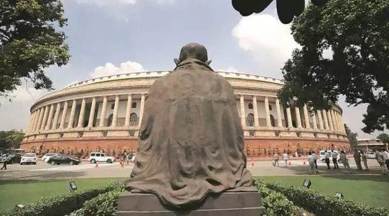Telling Numbers: A few more women candidates than in last Lok Sabha polls, still just 8.8%
The representation of women MPs shows a mixed trend in the analysis. It dipped consistently from 1962 to 1977, after which it has generally risen, with occasional exceptions. Women’s representation among MPs reached 11.6% in the outgoing Lok Sabha, the highest yet.

Of the 8,048 candidates contesting this year’s Lok Sabha elections, 711 are women, according to an analysis by Ashoka University’s Trivedi Centre for Political Data. The 711 women represent only 8.8% of the fray, but that is still the highest in six decades, and marginally better than the 7.6% in 2014.
The representation of women MPs shows a mixed trend in the analysis. It dipped consistently from 1962 to 1977, after which it has generally risen, with occasional exceptions. Women’s representation among MPs reached 11.6% in the outgoing Lok Sabha, the highest yet.
Among the states and Union Territories, Chandigarh has the highest female representation among candidates this year, at one-fourth. Among the larger states, Odisha with 15.5% has the highest representation. At the other extreme are Nagaland, Daman & Diu, Lakshadweep, Dadra & Nagar Haveli, Arunachal Pradesh and Manipur, where no women are contesting.
Among the parties, the BJP and the Congress have each fielded one woman among every eight candidates — respectively 55 out of 436, and 54 out of 421. Smaller parties such as J&K’s PDP (1 out of 2) and Tamil Nadu/Puducherry’s NTK (16 out of 33) have given half their tickets to women. Among the more prominent regional parties, the Trinamool Congress and the BJD have given one-third or more of their tickets to women, compared to just one in 34 given by the NCP. The INLD, IUML and AGP have not fielded any women candidates.